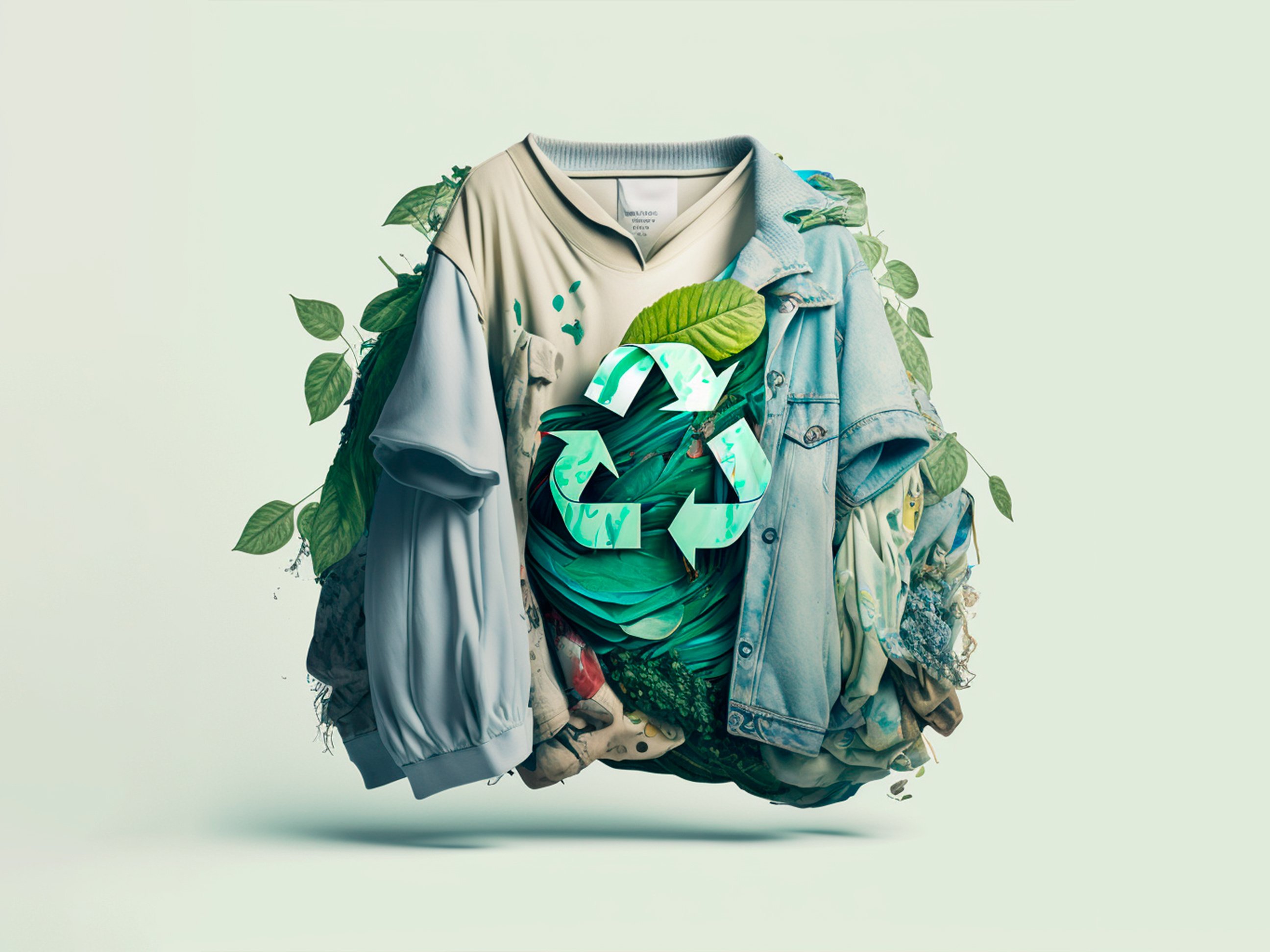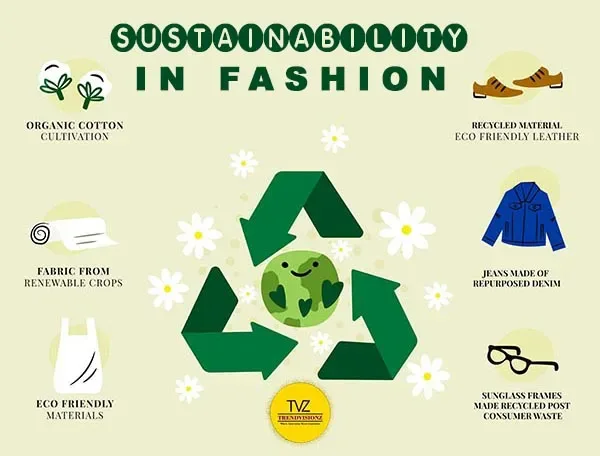Cape Town Sustainable Fashion: Eco-Friendly Trends to View
Cape Town Sustainable Fashion: Eco-Friendly Trends to View
Blog Article
Remain Ahead of the Curve by Discovering Cutting-edge Fashion Fads
In a market as dynamic as fashion, remaining ahead entails more than just adhering to existing trends-- it demands an expedition of innovation. Smart textiles, as an example, are transforming garments right into useful masterpieces, while 3D printing is transforming style procedures with its customizable, waste-reducing capabilities. As sustainability becomes a keystone, technologies like eco-friendly materials and circular style techniques are reshaping ecological obligation - Cape Town Sustainable Fashion. Additionally, the merging of technology and fashion proclaims a new era of customer involvement. Just how, then, can these arising fads redefine the future of style, and what effects do they hold for brand names looking for to grow in this evolving landscape?

Welcoming Smart Textiles
In the last few years, the apparel industry has observed a transformative change with the combination of clever textiles, a sophisticated development that mixes technology with textile. This evolution represents not just a combination of aesthetics and performance yet also a considerable jump towards sustainability and customization in vogue. Smart fabrics, likewise known as e-textiles, installed advanced electronics such as sensing units and conductive threads within the textile, enabling garments to connect with the user or the atmosphere.
These fabrics are developed to keep an eye on physical specifications, such as heart price or body temperature level, offering real-time health analytics. Beyond health applications, wise textiles are additionally being made use of for adaptive clothes, which can alter shade or pattern in feedback to environmental stimuli, hence providing a dynamic style experience.
Furthermore, the advancement of energy-harvesting textiles that generate power from motion or sunlight is paving the way for self-sufficient wearable technology. This advancement is interesting ecologically mindful consumers and designers aiming to minimize the eco-friendly footprint of style. As r & d in this area breakthrough, smart textiles are expected to become increasingly common, reshaping the landscape of modern style with their multifunctional capabilities.
The Surge of 3D Printing
Transforming the production landscape, 3D printing has actually become a game-changer in the fashion business. This cutting-edge technology has made it possible for designers to press the boundaries of creative thinking, creating intricate and personalized garments that were previously inconceivable. By leveraging digital style and additive manufacturing, 3D printing promotes the production of complicated geometries and patterns, allowing developers to explore brand-new appearances and frameworks.
A significant advantage of 3D printing in vogue is its ability to produce on-demand, lessening waste and reducing stock demands. This efficiency not only enhances manufacturing processes however also enables for fast prototyping, allowing designers to bring their visions to life in a shorter timeframe. Furthermore, 3D printing supports customization to a level unequaled by typical techniques, supplying personalized fits and special designs tailored to individual consumer preferences.
The increase of 3D printing has likewise democratized fashion, making it easily accessible to arising developers that can now make top notch pieces without considerable economic investment in standard manufacturing framework. As modern technology proceeds to development, the fashion business is positioned to harness the full potential of 3D printing, discovering new materials and strategies that will undoubtedly redefine exactly how fashion is conceived and created.
Sustainable Style Technologies
As the apparel industry faces journalism need for ecological obligation, lasting fashion technologies have arised at the center of transformative modification. The growing understanding of eco-friendly impact has sustained a shift towards more eco-conscious practices and products. Designers and brands are now prioritizing sustainability, incorporating approaches that decrease waste and decrease carbon impacts.
One significant development is the increase of circular style, which emphasizes recycling and upcycling to extend the lifecycle of garments. This approach not just lowers waste however also motivates customers to embrace an extra conscious technique to apparel consumption. Furthermore, the usage of sustainable products, such as natural cotton, hemp, and recycled polyester, has actually acquired traction. These products call for much less water and power throughout manufacturing, considerably minimizing ecological influence.
Another advancement lies in the adoption of innovative dyeing methods that use all-natural dyes or waterless procedures, thereby reducing the substantial amounts of water and chemicals typically used in fabric dyeing. In addition, improvements in biotechnology have actually brought about the production of lab-grown leather and textiles, offering cruelty-free and eco-friendly options to conventional products. Through these pioneering efforts, the fashion sector is making significant strides in the direction of a much more lasting future.

Tech-Integrated Apparel
Tech-integrated apparel stands for a cutting-edge fusion of fashion and innovation, reshaping exactly how people communicate with their clothes. This cutting-edge domain name is marked by the inclusion of smart textiles and ingrained electronic components, boosting both functionality and aesthetic charm. From health and fitness trackers embedded in sports apparel to heated jackets regulated through smart device applications, tech-integrated apparel uses consumers extraordinary benefit and versatility.
Pioneering brand names are driving this trend, concentrating on developing garments that reply to environmental stimuli or customer commands. For example, some garments can transform color or pattern in feedback to temperature level shifts, while others incorporate biometric sensing units to keep track of health metrics like heart rate or anxiety levels. The smooth combination of modern technology into textiles likewise expands to environmental sustainability, with efforts to develop self-cleaning materials or garments that adapt to weather, thus reducing the requirement for numerous layers.
In addition, the introduction of wearable innovation is not look at this now simply limited to apparel yet reaches devices like watches and eyewear, additional widening the extent of tech-integrated style. As the market proceeds to introduce, the possibility for personalization and personalization in clothing grows, offering consumers unique, tech-enhanced fashion experiences that cater to their individual demands and choices.
Future of Virtual Style
Recently, the future of online fashion has become a transformative pressure within the industry, leveraging developments in digital modern technology to redefine exactly how style is produced, experienced, and eaten. By incorporating increased reality (AR), online reality (VIRTUAL REALITY), and 3D layout devices, developers can now craft interactive and immersive experiences that transcend conventional style borders. Virtual style permits the creation of garments that exist entirely in electronic settings, providing limitless opportunities for technology without the limitations of physical production.
This electronic change not only provides possibilities for innovative expression yet likewise addresses sustainability problems intrinsic in typical fashion techniques. Cape Town Sustainable Fashion. By removing the demand for physical resources, digital style reduces waste and reduces carbon footprints. Furthermore, the surge of digital style straightens with the boosting consumer demand for distinct and personalized experiences, as digital garments can be tailored and customized to specific preferences with simplicity

Verdict
The garment industry's future lies in the combination of innovative modern technologies and lasting methods - Cape Town Sustainable Fashion. Smart textiles and tech-integrated garments are improving functionality, while 3D printing uses possibilities for personalization and waste reduction. Lasting style, via round strategies and eco-friendly materials, demonstrates a commitment to environmental stewardship. Furthermore, online style is positioned to redefine consumer interactions. Adjusting to these trends is essential for brand names More Info seeking to stay relevant and affordable in this rapidly developing landscape.
In recent years, the style industry has actually witnessed a transformative change with the combination of smart textiles, an innovative More Help advancement that blends technology with textile.As the fashion market grapples with the pressing demand for environmental obligation, sustainable style developments have arised at the center of transformative change.In current years, the future of online fashion has emerged as a transformative force within the sector, leveraging innovations in electronic modern technology to redefine just how fashion is developed, experienced, and consumed. The increase of online style straightens with the raising consumer demand for distinct and personalized experiences, as digital garments can be personalized and tailored to private choices with ease.
The style sector's future lies in the integration of sustainable methods and ingenious modern technologies.
Report this page